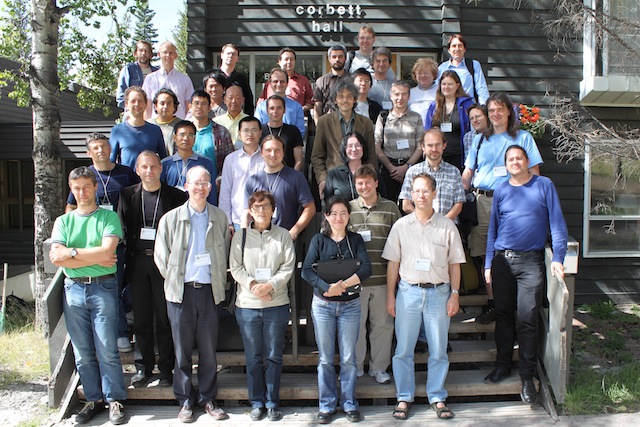Cluster algebras, representation theory, and Poisson geometry (11w5137)
Organizers
Thomas Brustle (Université de Sherbrooke and Bishop's University)
Christof Geiss (Universidad Nacional Autónoma de México)
Michael Shapiro (Michigan State University)
Hugh Thomas (University of New Brunswick)
Description
The Banff International Research Station will host the "Cluster algebras, representation theory, and Poisson geometry " workshop from September 4 to 9, 2011.
Suppose you have a blown-up balloon, with a lot of dots marked on it, and
you measure the distance between each pair of dots. That collection of
information is what mathematicians would call a "metric" for the balloon.
If you blew more air into the balloon, or if you squashed it or stretched
it, those distances would change. This shows that there are lots of
different metrics which could exist for the same balloon. Teichmueller
theory is concerned with studying the collection of all the different
metrics that could exist for the same surface (which could be a balloon,
or flat like a piece of paper, or could also have other, less usual
shapes).
Cluster algebras were invented less than ten years ago by Sergei Fomin and
Andrei Zelevinsky, and since then have appeared in a wide variety of
contexts in mathematics and physics, including Teichmueller theory. It
turns out that any surface has a cluster algebra associated to it, and the
cluster algebra encodes all possible coordinate systems of the space of metrics for the surface. These cluster algebras will be a particular focus of the
meeting.
The Banff International Research Station for Mathematical Innovation and Discovery (BIRS) is a collaborative Canada-US-Mexico venture that provides an environment for creative interaction as well as the exchange of ideas, knowledge, and methods within the Mathematical Sciences, with related disciplines and with industry. The research station is located at The Banff Centre in Alberta and is supported by Canada's Natural Science and Engineering Research Council (NSERC), the U.S. National Science Foundation (NSF), Alberta's Advanced Education and Technology, and Mexico's Consejo Nacional de Ciencia y Tecnología (CONACYT).






